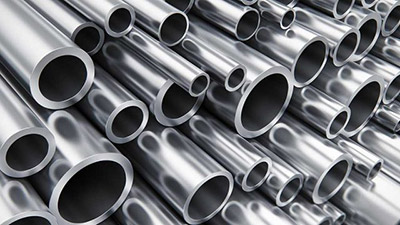Ammonium chloride galvanizing is a type of acid galvanizing. It has a fine crystalline coating, a beautiful glossy coating, good dispersion and deep plating ability, suitable for plating complex parts and can be directly plated on special materials such as high strength steel, castings, forgings and powder metallurgy. COSTALZINC introduces you to the role of zinc chloride in the plating process.
Zinc chloride is not only used as a main salt to provide zinc ions, but is also a conductive salt in itself, increasing the electrical conductivity of the plating solution. With its high content and low resistance, the bath voltage is lower, thus saving electricity. Similarly, an increase in zinc chloride content increases the upper limit of permissible current density, allowing higher current densities to be used, increasing deposition speed and productivity, shortening the plating time while the thickness of the galvanised layer remains the same, and also reducing the effect of metal impurities.

Insufficient zinc chloride content will cause concentration polarisation on the cathode. A certain amount of concentration polarisation has advantages; however, if the concentration polarisation is too large, it will cause too many electrons to collect on the plated part due to the unavailability of zinc ions, resulting in scorching of the plating. In order to prevent scorching, one has to reduce the current density, but this inevitably leads to lower productivity and a reduction in the uniformity of the plating solution.
Therefore, in general, the concentration of zinc chloride in barrel plating is lower than in rack plating, and the low zinc chloride content helps to improve the dispersion and coverage capacity of the plating solution. A higher concentration of zinc chloride should also be used for zinc plating of cast iron parts.
To obtain a good plating layer within the permitted concentration of zinc chloride, there is also the temperature of the plating solution to work with. In general, the upper limit should be taken for zinc chloride in winter and the lower limit for zinc chloride in summer.
The solubility of the anode plate zinc is related to both the pH and temperature of the plating solution. Usually, with a low pH and a high temperature of the bath, the zinc plate dissolves faster; in general, as long as sufficient anode area is maintained to maintain the concentration of zinc ions in the plating solution, as little or no zinc chloride is added.
Among the raw materials for electroplating, there are still more problems with the quality of zinc chloride, mainly because the manufacturer does not get rid of copper and lead impurities. Therefore, when purchasing zinc chloride, it is important to choose a company with quality assurance and a well-known brand. costalzinc offers high quality anhydrous zinc chloride and welcomes you to learn more about it.
Generally good zinc chloride is white crystalline tissue with no dampness, grey or greyish zinc chloride should not be used. The anode zinc plate should be checked frequently to maintain sufficient anode area to provide zinc ions, and zinc chloride should be replenished as little as possible.
Finally, contact us and don't hesitate to get a quote and more details.
Add.: Room 508, Sandhill Central, No.505 Zhangjiang Road, Pudong, Shanghai 201210, China
Tel.: +86 21 6105 7428
E-mail: info@coastalzinc.com
Website: www.coastalzinc.com
Copyright © Dongtai Coastal Zinc Industry Group Co., Ltd. All Rights Reserved | Sitemap Powered by 